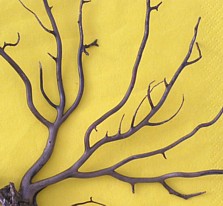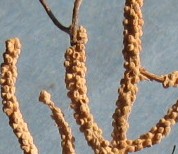-

"hibiscustour", three separate sites -
Islands and lagoons New Caledonia, Polynesia (part). -

Curiosity. Things, amazing, science, society.. -

Ideas perso. Household, Practical life, D.I.Y, Computering..
 
but reality |
  |
In the Mediterranean sea, the " red coral ", individualistic, lives basically by 40 to 100 meters, but one found corals up to 3500 meters. The " black coral " also lives with great depth. |
madreporia live close to the surface of the water because these algae, unicellular, are true plants which live only with a strong light (photosynthesis). They are involved in the coral loss of colour, when they are ill but if the coral is badly affected, it is not dead yet despite its poor looking ; one can check it with the good quality if the lime. |
|
The barrier reef
testify of the real size the island had at the beginning ;
so, New Caledonia was twice or triple ! The thickness of this circle can reach several hundreds of metres. It is broken into chunks and crumbles under the power of tempests and uricanes. |
The reef circle a lagoon whose part no facing the wind is larger than the other
(say under the wind (sheltered).
On the
sheltered coast (the wind have to cross the island), slopes are
attenuated but the sea receive less oxygen. |
 Open
your eyes... There are sea anemones on our Atlantic
coasts, inside small ponds of sea water left during the low tide. Black
or light-green anemones of about one tenth cm.
My own
picture in Brittany.
Not so great than tropical ones but it's emotional finding some. Open
your eyes... There are sea anemones on our Atlantic
coasts, inside small ponds of sea water left during the low tide. Black
or light-green anemones of about one tenth cm.
My own
picture in Brittany.
Not so great than tropical ones but it's emotional finding some.
 Inside
little bunches of fishing thread and algae let at the low tide ont the
shore or the beach sand, we found several times these coral
branches Inside
little bunches of fishing thread and algae let at the low tide ont the
shore or the beach sand, we found several times these coral
branches
Branches are the first skeleton. The second skeleton is of lime. One can distinguish individual calcareous concretions with their hole that contained a polyp. |
Our beloved dinosaurs would have been living between
-160 and
-
60 millions years i.e Jurassic and cretacéous perod.They have thus
desappear at the end of the cretaceous. The height of the seas and oceans varies during time, fluctuating between ice periods and inter-ice periods, but there are lots of short variations between them !). so climates evolve. Some stacks to think at the both ecologists and infortunately, scientists statetements wo foresee the future with the ozon hole : At - 600.000 years, the level of seas was the same as now. See "some more, top page" for variations of ice quantity and sea levels. Rather numerous mountains are marine deposits (limestones) raised, and even coral reefs, like the Dolomites (Italy), canyons in Madagascar and so on.. |
|
TENTACLES
Each tentacle has several tiny pouches or bags containing a urticant liquid ; a small harpoon attached to a filament bathes in this urticant liquid. A lid closes the whole; if a prey approaches to closely and touch a cilia the lid opens and the harpoon is projected. |
When one put the hand on the coral, one have the impression to get a viscous liquid on the hand and that start itching. Without any wound (cut, scratch), it won't develop any harm (see " risks and dangers..). All are urticants : they release a paralysing liquid on their prey. |
It is sensible to avoid touching the corals. Tahitians rub a lemon on them but I don't know about the effectiveness of this process. |
![]() Coral 2
(threats, madreporia of New Caledonia, anemones, tentacles, reproduction)
Coral 2
(threats, madreporia of New Caledonia, anemones, tentacles, reproduction)

|